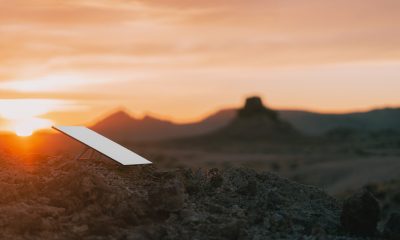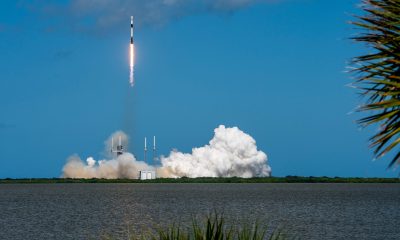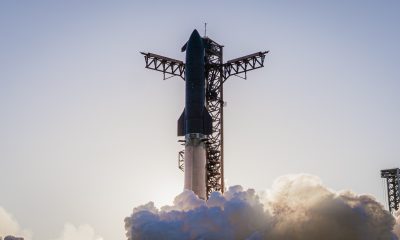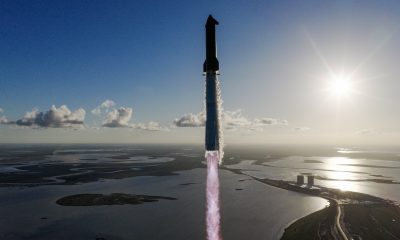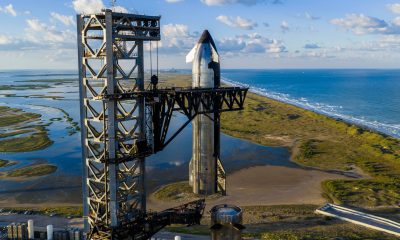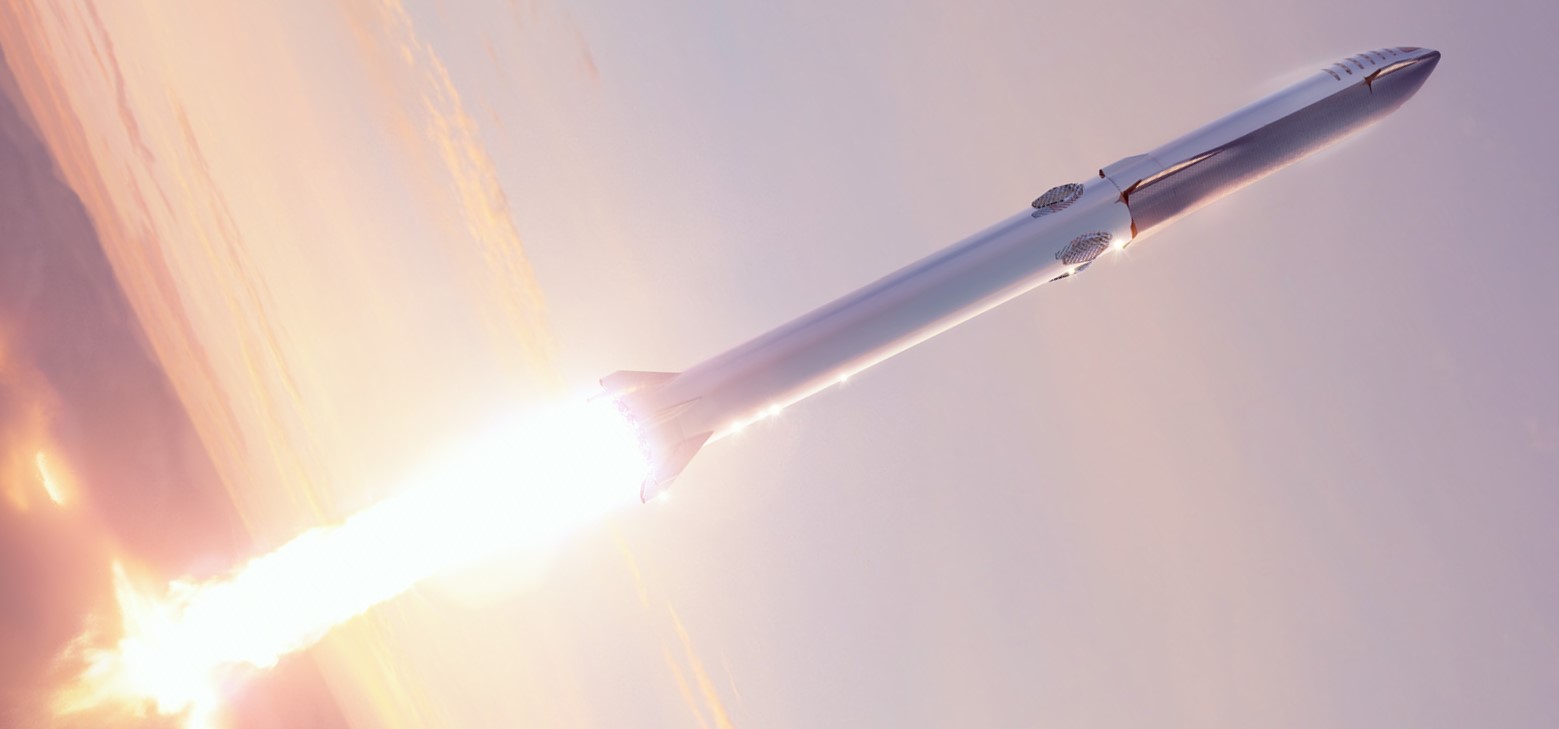
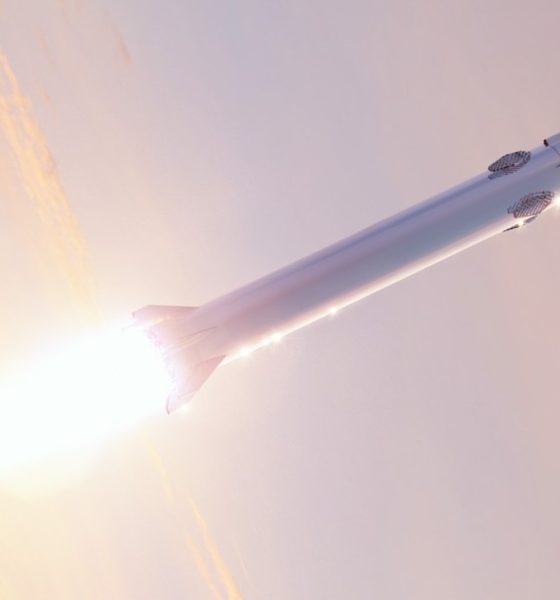
News
SpaceX teases progress towards Starship’s orbital launch debut
A recorded address from SpaceX President and COO Gwynne Shotwell to a graduating class of college seniors unexpectedly teased progress building the 35 Raptor engines that will power Starship’s imminent orbital launch attempt.
In a seemingly calculated move, the famous SpaceX executive’s prerecorded address included a glimpse of a screen on the factory floor tasked with tracking progress towards Starship’s first “orbital launch.” Featuring a basic graphic clearly depicting the aft ends of a Starship upper stage and Super Heavy booster, the display ultimate indicated that SpaceX has already “shipped” at least 11 of the almost three-dozen Raptor engines needed for the combined rocket’s first launch attempt.
Just three months ago, SpaceX CEO Elon Musk confirmed well-sourced reports from NASASpaceflight.com that the company was aiming to attempt Starship’s first orbital launch no later than July 2021. Two months later, regulatory documents revealed more concrete details for said launch attempt, indicating that Starship and Super Heavy’s first combined launch would see the ship spend some 80 minutes in space before reentering and splashing down off the coast of Hawai’i.
Not long after, Musk revealed that SpaceX boosted Super Heavy’s engine count from 28 to 29 and implied that even the first few orbital launch attempts would use a full complement of 29 engines. Combined with Starship’s three sea level and three vacuum-optimized Raptors and indications that the first one or more orbital-class ships and boosters will be expended without any recovery attempt, it became clear that SpaceX would need to radically expand Raptor production to meet such unprecedented demand for engines.
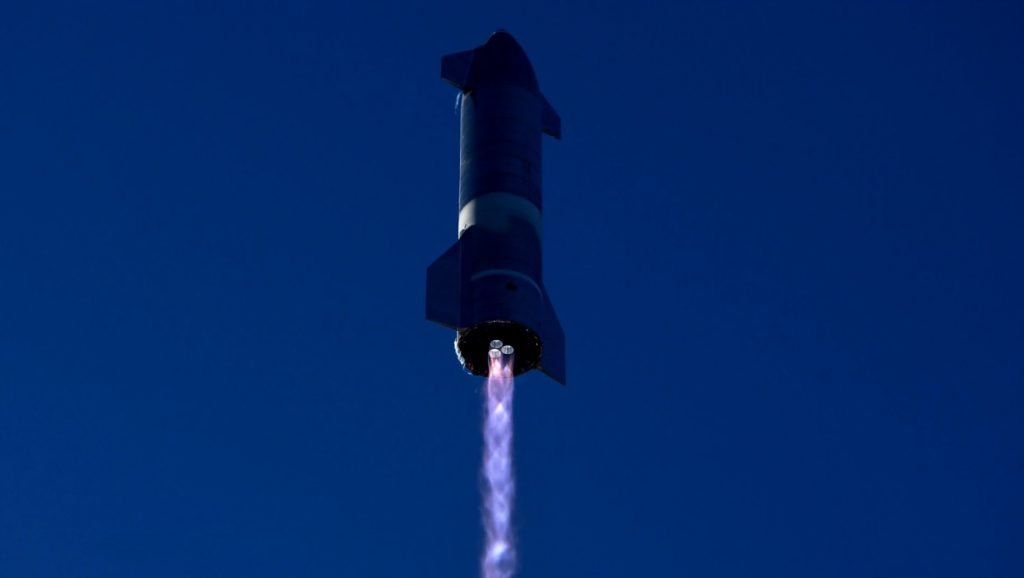
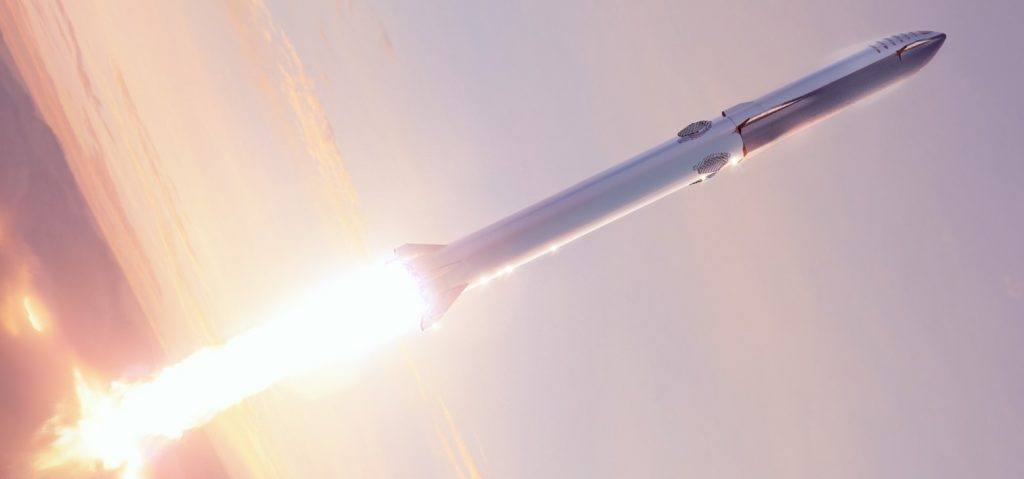
All told, SpaceX will need to manufacture, qualify, and deliver at least 35 Raptor engines to fully outfit every Starship and Super Heavy pair. If initial test flights are meant to expend both stages, that already exceptional challenge expands to require 35 engines for every launch attempt. Eventually, SpaceX’s goal is to manufacture hundreds of Raptor engines per year to outfit dozens of Starships and Super Heavy boosters, but Raptor only began full-scale integrated ground testing a little over two years ago.
Despite the challenges, SpaceX appears to be more than up to them and the display Shotwell walked past within the last month or two suggests that the company’s main Hawthorne, California factory has already “shipped” almost a third of the engines required for Starship’s inaugural orbital test flight. In this case, “shipped” likely means that those 11 engines have left the factory and headed to McGregor, Texas to be cleared for flight.
Several may already have made it through qualification testing and been delivered to Boca Chica – in fact, two new engines arrived at SpaceX’s Starship factory just last weekend. However, the rapid-fire arrival of dozens of Raptors will be unlike anything yet seen in Boca Chica. Altogether, SpaceX has sent a total of 30-35 Raptors to Boca Chica in the last two years. In the runup to Starship’s first orbital launch attempt, possibly as early Q3 2021, SpaceX will need to deliver ~35 Raptors in two months – an unprecedented influx of engines that will be easily tracked by the public.
Perhaps the most intriguing part of SpaceX’s calculated Starship launch teaser is the presence of a 25-day countdown, indicating that something is supposed to happen within the next two to four weeks. Given the display’s focus on “engines shipped,” the timer is likely counting down to an internal shipment target for the mission’s 35th and final engine. If SpaceX hits that target and Shotwell’s class address was recorded within the last week or so, all 35 orbital test flight Raptors could feasibly leave the factory floor by the end of the first full week of July, leaving a few weeks to finish qualification testing and ship each engine to Boca Chica before the end of the month.
If SpaceX can clear all 35 Raptors for flight by the end of July, it’s plausible that clean qualification testing could leave the first orbital-class Starship and Super Heavy booster ready for their launch debut in August or September – and almost certainly before the end of the year.
News
Tesla Cybercab spotted testing on public roads for the first time
The car was spotted just minutes from Tesla’s Engineering Headquarters in Los Altos, California. There are a few interesting tidbits we can gather from the photo and the information shared with it.
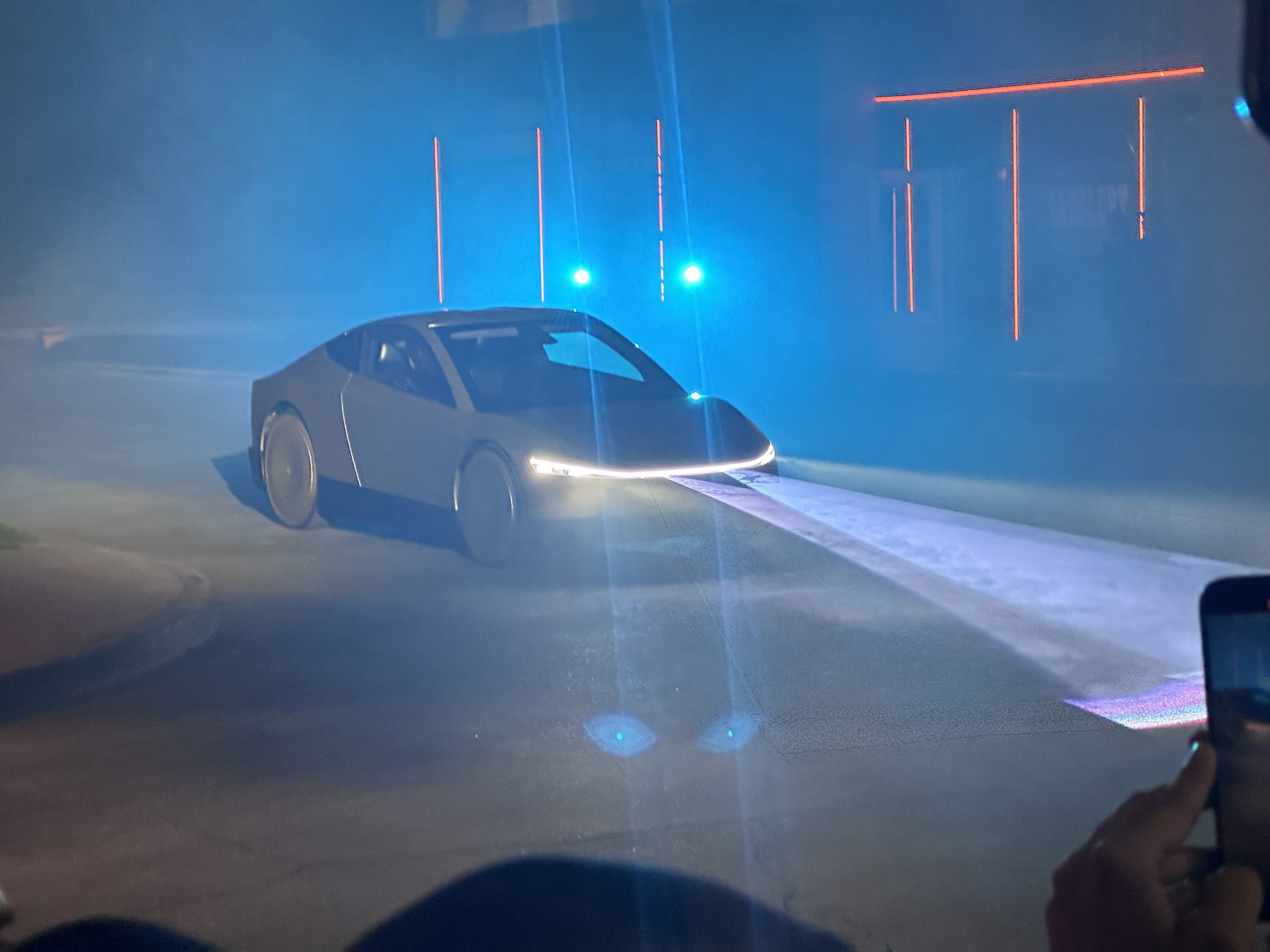
The Tesla Cybercab has been spotted testing on public roads for the first time, marking a substantial step forward in the vehicle’s development.
The car was spotted just minutes from Tesla’s Engineering Headquarters in Los Altos, California. There are a few interesting tidbits we can gather from the photo and the information shared with it:
BREAKING: Tesla’s Cybercab spotted testing on public roads for the first time!
This was in Los Altos, California, about 10 minutes from Tesla’s Engineering HQ. As would be expected at this stage, a person was in the driver seat.
The future is autonomous 🤖 pic.twitter.com/cvd6UrnKZo
— Sawyer Merritt (@SawyerMerritt) October 29, 2025
The vehicle had a driver and side view mirrors equipped on it, which seems to be pretty expected, especially at this stage.
Tesla might have been using its Full Self-Driving software with the vehicle as it enters this new stage of testing on public roads. This seems most likely, especially as the car, which has long been developed to be void of a steering wheel and pedals, will totally rely on autonomous tech to transport one or two passengers to their destination.
Additionally, side view mirrors are required by law at delivery, and Tesla was likely looking to keep things as safe and elementary as possible, especially with this early stage of testing.
As this is the first time the vehicle has been spotted on public roads and the first time it was likely testing on them, Tesla was being cautious.
There have been a lot of developments with Cybercab over the past few weeks, as the car has been spotted testing on the Fremont Factory’s test track, units have been seen outside of Gigafactory Texas’s crash testing facility, and there has been some additional speculation about what the vehicle’s standard equipment will be.
There have also been quite a few job postings by Tesla for manufacturing and production roles related to Cybercab over the past few weeks.
Yesterday, Tesla’s Board Chair, Robyn Denholm, revealed that the company could end up building Cybercab with a steering wheel and pedals, contrary to what Tesla and CEO Elon Musk have wanted to do.
The vehicle has yet to reach that stage of regulatory testing, but Tesla wants to start volume production in Q2. If it wants to release the vehicle without any manual controls, that means that Full Self-Driving will need to be completed within the next eight months.
News
Tesla hints it could see ‘a few more vehicles’ released soon
Denholm said on CNBC yesterday that “we do have a few other vehicles coming out.”
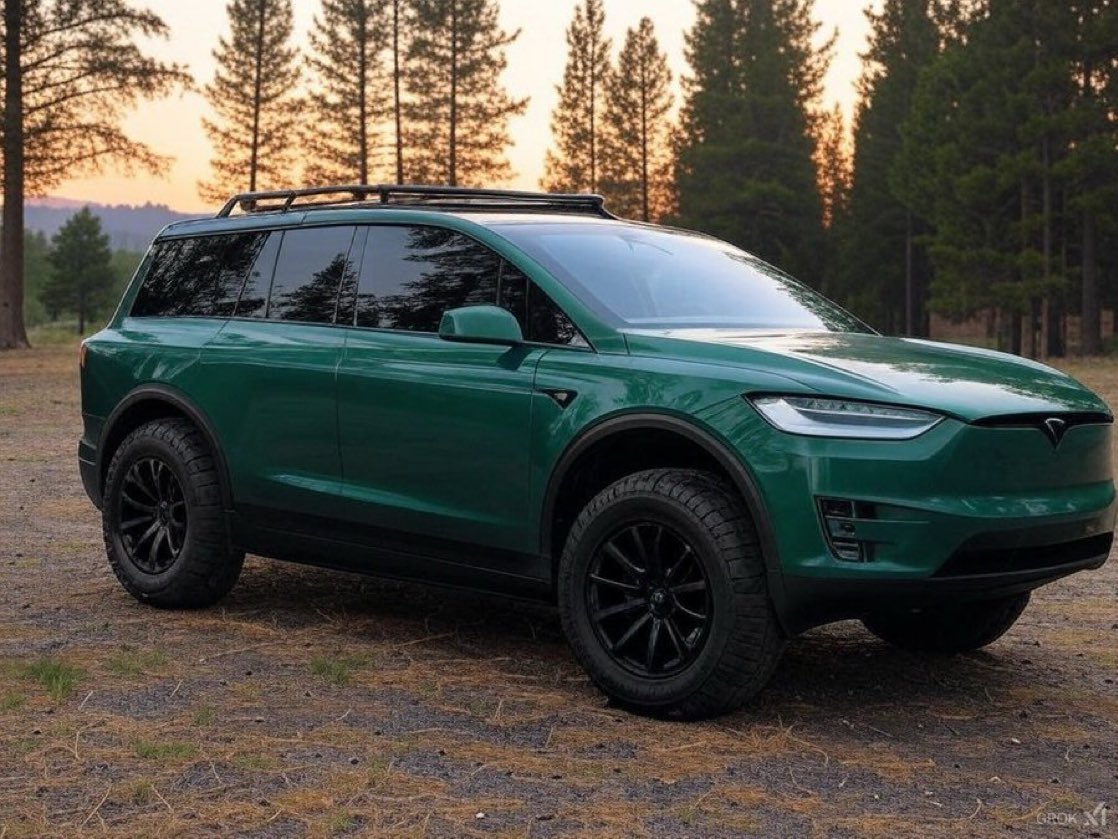
Tesla Board Chair Robyn Denholm hinted the company could see “a few more vehicles” coming out and being released soon, although there is no indication of what could be on the way based on her comments.
However, Tesla has hinted toward several potential releases in the coming years, as other executives, including Chief Designer Franz von Holzhausen, have talked briefly about what could be on the way.
Denholm said on CNBC yesterday that “we do have a few other vehicles coming out.”
BREAKING: $TSLA BOARD CHAIR ROBYN SAYS — “WE HAVE NEW VEHICLES COMING OUT” 👀
It’s happening ! pic.twitter.com/f8UuZWGLuP
— TheSonOfWalkley (@TheSonOfWalkley) October 27, 2025
It was a vague and almost cryptic sentence, as, in all honesty, it was not completely clear whether she was talking about recent releases that are just making their way to market, like the Model 3 and Model Y “Standard,” or new vehicles altogether.
Nevertheless, it’s worth dissecting.
Tesla “Standard” Models
On October 7, Tesla launched the Standard Model 3 and Model Y, stripped-down versions of their now “Premium” siblings. The Standard trims lack premium features like leather seats, a rear touchscreen, and a glass roof, among other features.
These cars are just starting to be delivered for the first time, so it is possible that Denholm was referring to these cars.
Potential Model 2 Hint?
There has always been a looming vehicle model that many Tesla fans and owners have been intrigued by: the Model 2.
This car was hinted at being the $25,000 model that Tesla was rumored to be developing, and many thought that was the vehicle that would be released earlier this month, not the Standard Model 3 and Model Y.
Instead, the Model 2 could be something that would enable Tesla to reach an entirely new consumer base, including those who are not able to swing the payment for the company’s more premium offerings.
It seems Tesla will have to launch some sort of extremely affordable model in the future, and with the Cybercab being slotted at that rough price point, it would not be out of the question for it to be in the realm of possibility for future releases.
It’s worth noting, however, that it is probably unlikely this will happen. Tesla is so deadset focused on autonomy, it seems Cybercab would take extreme precedence over the unconfirmed “Model 2.”
Cybertruck-inspired SUV
Tesla fans have been begging the company to develop a full-size SUV that would compete with the Ford Expedition or Chevrolet Tahoe, but the company has not given any indication that this would be something it would build.
Nevertheless, there was a very subtle hint in a recent promotional clip that showed a Cyber SUV mock-up placed strategically next to a clay model of a Model 3:
The Model X is simply not what people want when it comes to an SUV, as it does not have the seating capacity and cargo space that many need with a full-sized SUV.
This issue, in particular, has been one that has been extremely relevant to the company’s future lineup as consumers have shown they would be interested in a Tesla vehicle that fit this description.
Additionally, von Holzhausen said in September that a Cyber SUV or a smaller electric pickup with a more traditional design is “definitely things we’ve considered…We’re working on so many innovative and fun things.”
Tesla gives big hint that it will build Cyber SUV, smaller Cybertruck
Investor's Corner
Tesla enters new stability phase, firm upgrades and adjusts outlook
Dmitriy Pozdnyakov of Freedom Capital upgraded his outlook on Tesla shares from “Sell” to “Hold” on Wednesday, and increased the price target from $338 to $406.
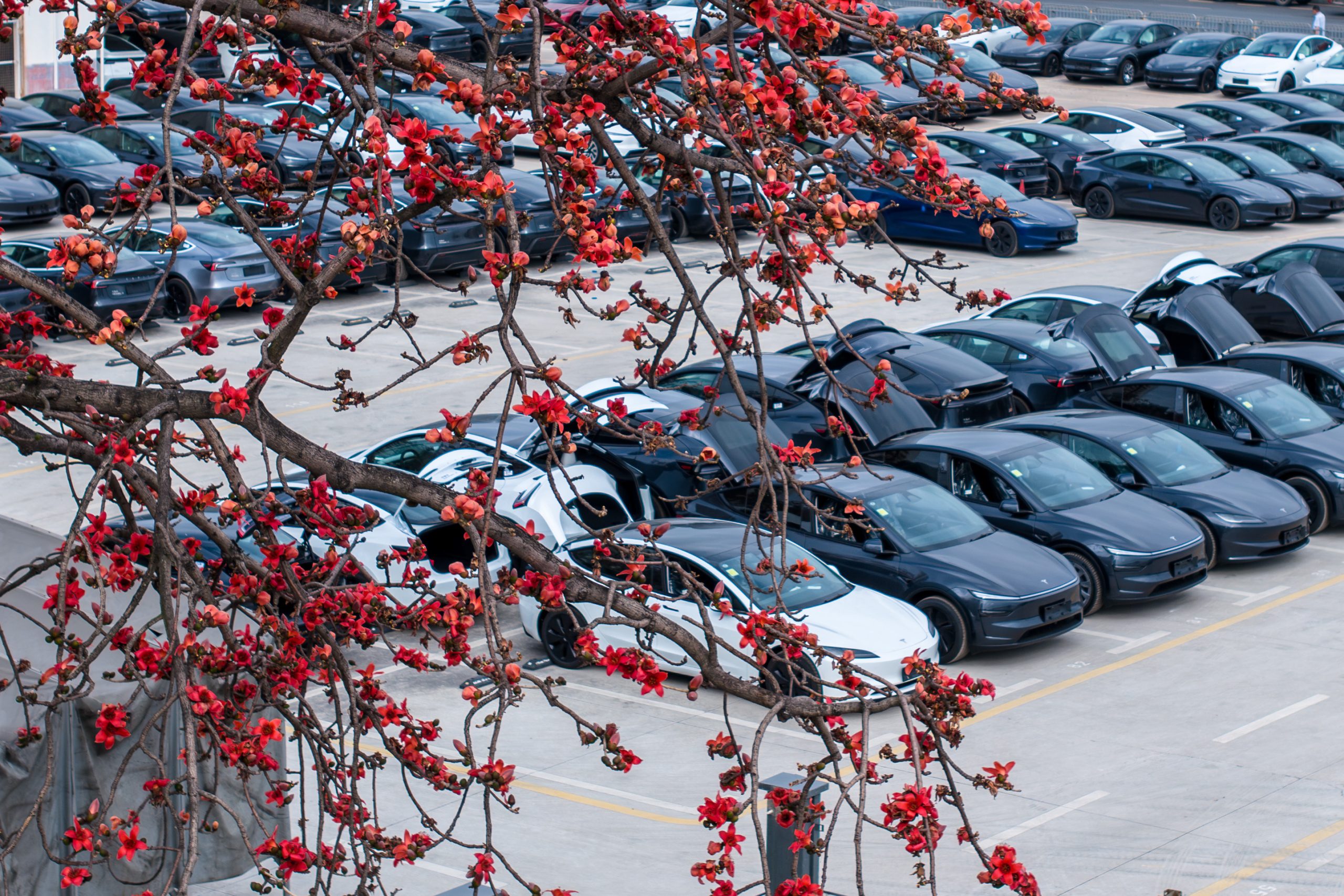
Tesla is entering a new phase of stability in terms of vehicle deliveries, one firm wrote in a new note during the final week of October, backing its position with an upgrade and price target increase on the stock.
Dmitriy Pozdnyakov of Freedom Capital upgraded his outlook on Tesla shares from “Sell” to “Hold” on Wednesday, and increased the price target from $338 to $406.
While most firms are interested in highlighting Tesla’s future growth, which will be catalyzed mostly by the advent of self-driving vehicles, autonomy, and the company’s all-in mentality on AI and robotics, Pozdnyakov is solely focusing on vehicle deliveries.
The analyst wrote in a note to investors that he believes Tesla’s updated vehicle lineup, which includes its new affordable “Standard” trims of the Model 3 and Model Y, is going to stabilize the company’s delivery volumes and return the company to annual growth.
Tesla launches two new affordable models with ‘Standard’ Model 3, Y offerings
Tesla launched the new affordable Model 3 and Model Y “Standard” trims on October 7, which introduced two stripped-down, less premium versions of the all-electric sedan and crossover.
They are both priced at under $40,000, with the Model 3 at $37,990 and the Model Y at $39,990, and while these prices may not necessarily be what consumers were expecting, they are well under what Kelley Blue Book said was the average new car transaction price for September, which swelled above $50,000.
Despite the rollout of these two new models, it is interesting to hear that a Wall Street firm would think that Tesla is going to return to more stable delivery figures and potentially enter a new growth phase.
Many Wall Street firms have been more focused on AI, Robotics, and Tesla’s self-driving project, which are the more prevalent things that will drive investor growth over the next few years.
Wedbush’s Dan Ives, for example, tends to focus on the company’s prowess in AI and self-driving. However, he did touch on vehicle deliveries in the coming years in a recent note.
Ives said in a note on October 2:
“While EV demand is expected to fall with the EV tax credit expiration, this was a great bounce-back quarter for TSLA to lay the groundwork for deliveries moving forward, but there is still work to do to gain further ground from a delivery perspective.”
Tesla has some things to figure out before it can truly consider guaranteed stability from a delivery standpoint. Initially, the next two quarters will be a crucial way to determine demand without the $7,500 EV tax credit. It will also begin to figure out if its new affordable models are attractive enough at their current price point to win over consumers.
-

 Elon Musk2 weeks ago
Elon Musk2 weeks agoSpaceX posts Starship booster feat that’s so nutty, it doesn’t even look real
-

 Elon Musk2 weeks ago
Elon Musk2 weeks agoTesla Full Self-Driving gets an offer to be insured for ‘almost free’
-

 News2 weeks ago
News2 weeks agoElon Musk confirms Tesla FSD V14.2 will see widespread rollout
-

 News2 weeks ago
News2 weeks agoTesla is adding an interesting feature to its centerscreen in a coming update
-

 News2 weeks ago
News2 weeks agoTesla launches new interior option for Model Y
-

 News2 weeks ago
News2 weeks agoTesla widens rollout of new Full Self-Driving suite to more owners
-

 Elon Musk2 weeks ago
Elon Musk2 weeks agoTesla CEO Elon Musk’s $1 trillion pay package hits first adversity from proxy firm
-

 News1 week ago
News1 week agoTesla might be doing away with a long-included feature with its vehicles


